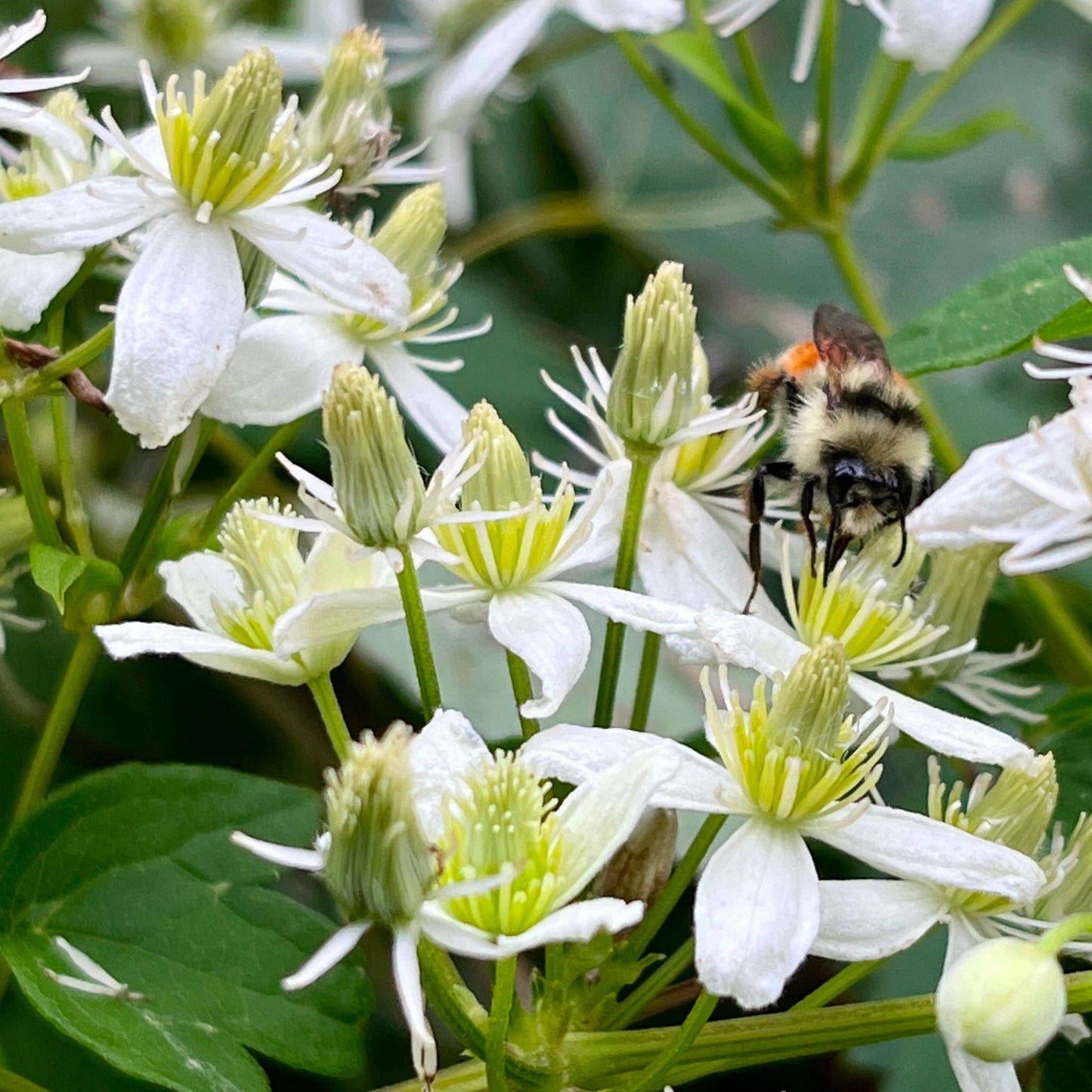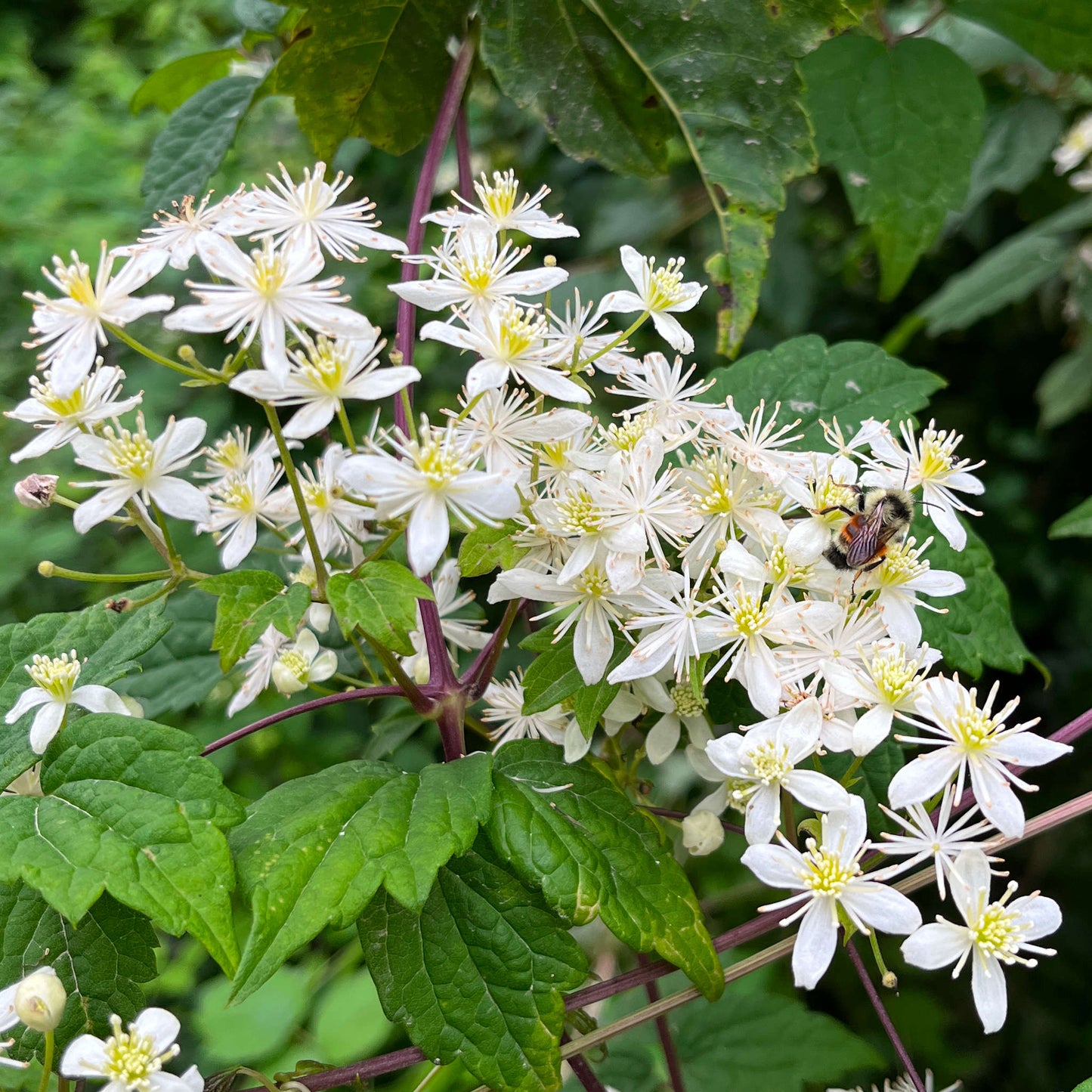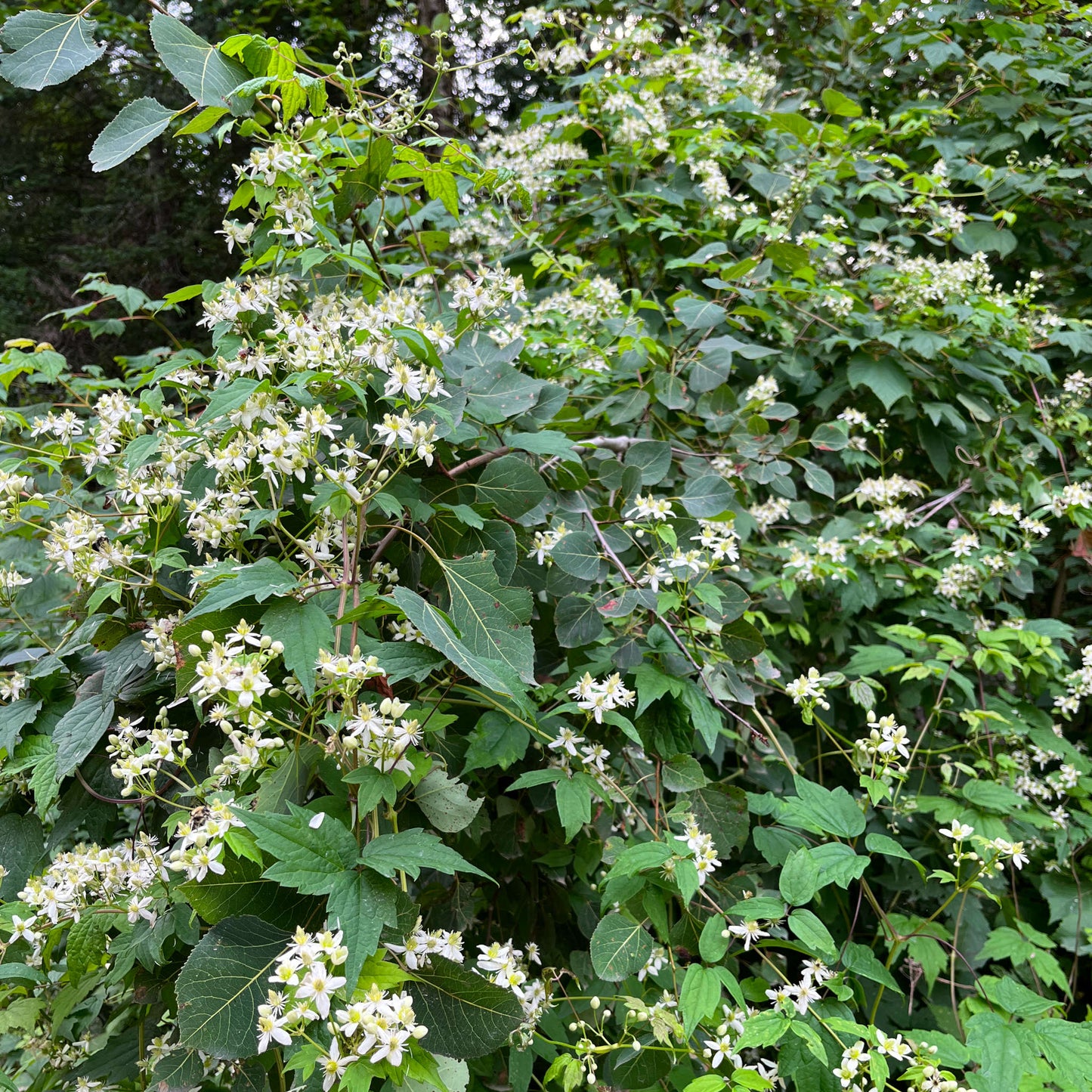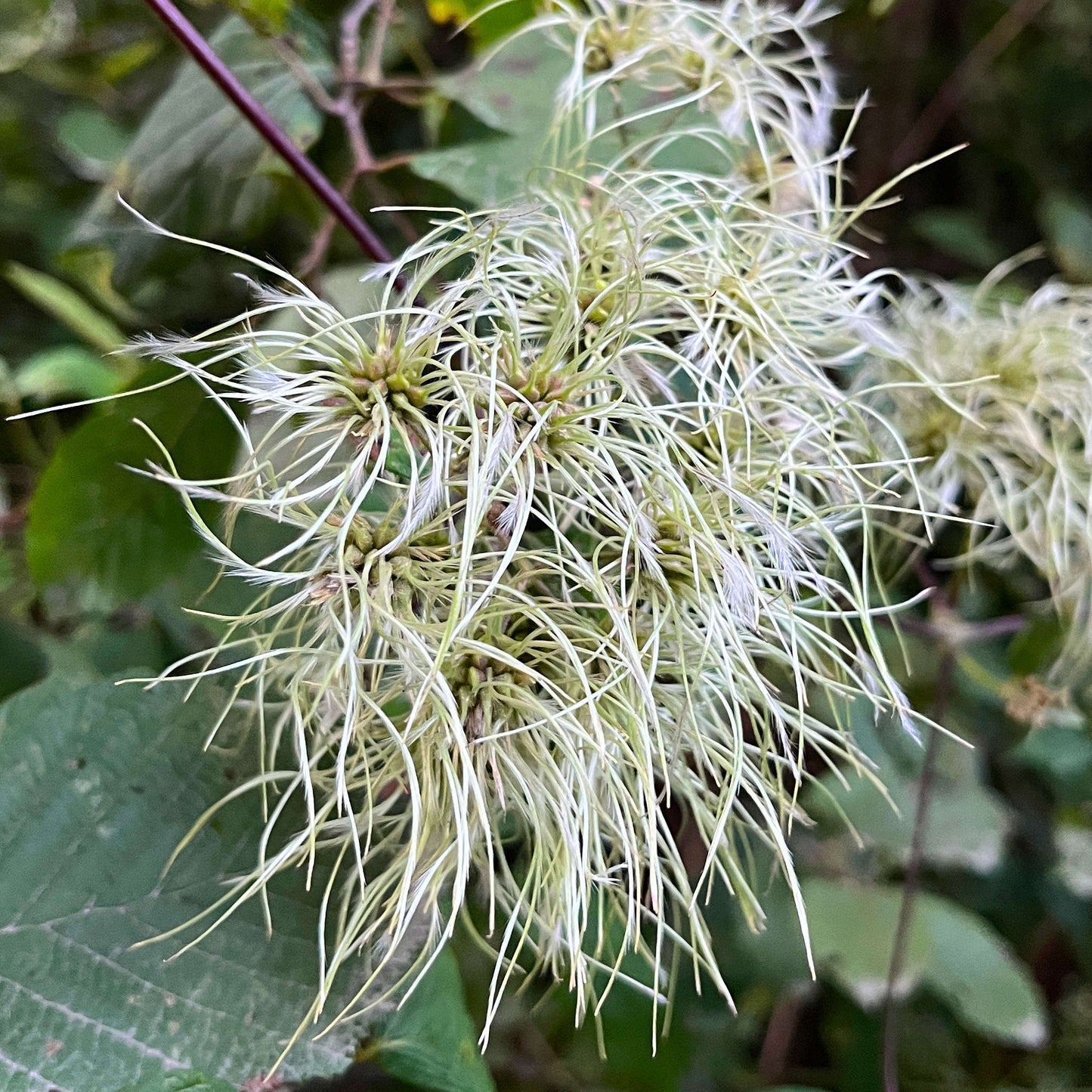This site is protected by hCaptcha and the hCaptcha Privacy Policy and Terms of Service apply.
For successful seedlings,
see the growing notes at the bottom of the page!
Virginia clematis (Clematis virginiana) is a beautiful native vine from Quebec, prized for its abundant small white flowers that appear from mid to late summer. These flowers attract numerous pollinating insects, bringing vibrant activity to the garden. After flowering, the blooms transform into fluffy seed heads that persist on the vine until late fall, adding an extra decorative touch. Its dark green foliage is another feature, and with its long slender stems, this vine can climb fences, trellises, or even large shrubs. Lacking tendrils, it wraps its stems and petioles around nearby structures and plants. Virginia clematis thrives in cool, moist areas such as stream banks, wet meadows, or forest clearings, and does well in gardens where it can enjoy some partial shade.
Ecological Roles
Virginia clematis plays an important role in Quebec's ecosystems. Its flowers attract a wide range of pollinators, including bees and butterflies, contributing to insect diversity in the garden. The fluffy seeds also provide food for some bird species. As it climbs trees or shrubs, Virginia clematis offers habitat and protection for small wildlife. Being a dioecious plant, it requires both male and female plants to produce viable seeds, so planting several individuals is recommended to maximize cross-pollination and enjoy the ornamental seed heads in the fall.
Because it prefers moist, slightly shaded environments, Virginia clematis helps stabilize soils along waterways and wetlands, contributing to the preservation of these fragile environments.
Virginia clematis seeds require cold stratification to ensure germination. See the cultivation notes below for more details.
Akène cannot assume any responsibility for the use of plants for therapeutic purposes. Always seek advice from a professional before using a medicinal or edible plant.
Sowing and Growing
Technical Details
Seeds per packet: 100
Family: Ranunculaceae
Scientific name: Clematis virginiana
Life cycle: Perennial
Hardiness zone: 3
Soil type: Silty to clayey
Soil moisture level: Medium to humid
Soil - additional attributes: Well-drained
Light: Sun, partial shade
Blooming: July to September
Spacing: 120 cm
Height: 600 cm
Deer resistance: High
Stratification: 75 days
Scarification: No
Germination time: 15 to 20 days
Sowing depth: 5 mm




